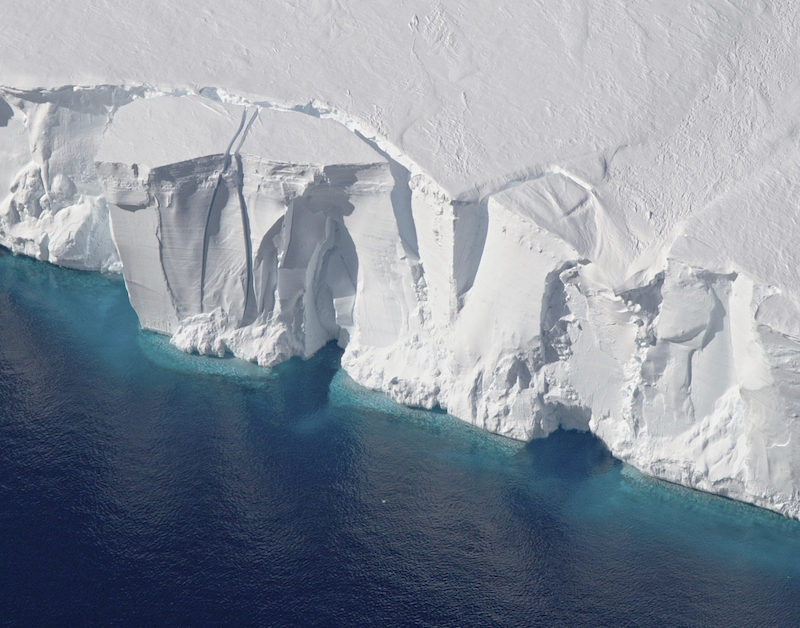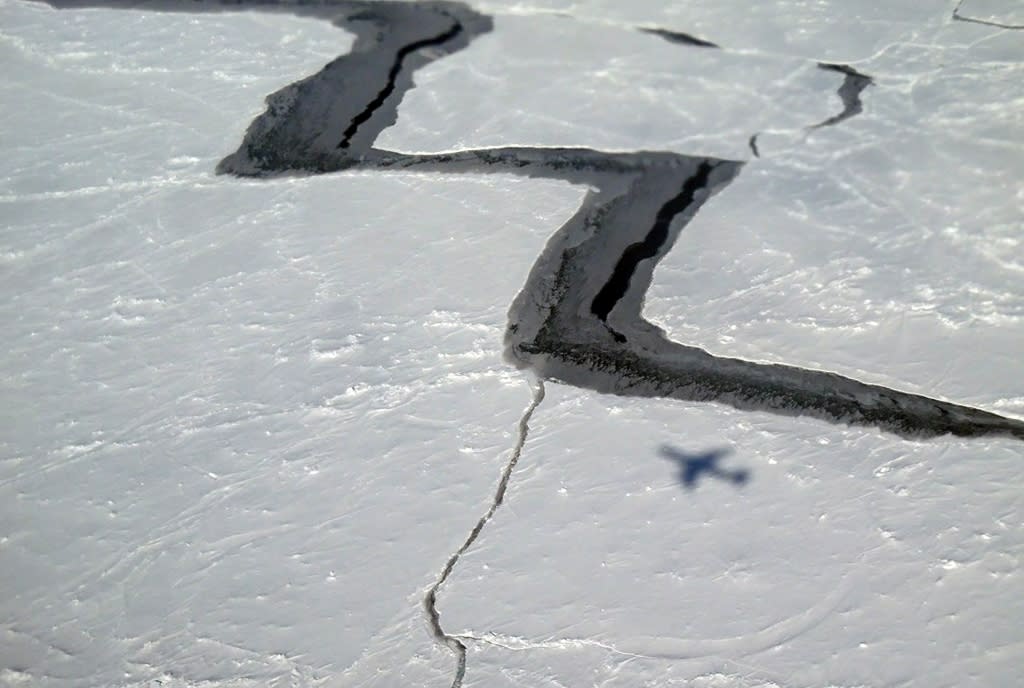

"We can't reverse this sea level rise, so we need to consider how to mitigate it and protect our coastal communities now. The Amery Ice Shelf in Antarctica has just produced its biggest iceberg in more than 50 years. "We are already on track for sea level rise in the next several decades that will impact coastal communities worldwide," Pettit said. Global sea levels will rise two to six feet by 2100 on the current trajectory, driven mainly by melting in Greenland and Antarctica, according to NASA satellite data. However, scientists have warned that projections underestimate the impact of climate change on sea level rise.
#ANTARCTIC ICE SHELF BREAKING OFF CRACK#
The cracks in the Antarctic ice shelf are similar to those in a car windshield, where a slowly growing crack reveals that the windshield is weak and a slight bump to the vehicle could prompt the windshield to immediately break apart into hundreds of pieces of glass, according to Oregon State University glaciologist Erin Pettit.ĭuring the meeting, the scientists said they've targeted the weak and strong parts of the shelf and concluded that fractures will take a "zig-zag" pathway through the ice and ultimately cause the shelf to break in as little as five years. Personal Loans for 670 Credit Score or Lower Personal Loans for 580 Credit Score or Lower This material may not be published, broadcast, rewritten or redistributed.Best Debt Consolidation Loans for Bad Credit (Image credit: contains modified Copernicus Sentinel data (2021), processed by ESA, CC BY-SA 3.0 IGO) New. This was due to a warm water current from the east whittling away at the vital “pinning points” that anchor the shelf to the land.Ĭopyright 2021 LiveScience, a Future company. This giant iceberg broke off from Antarctica's Brunt Ice Shelf on Feb. Live Science reported in April that the Thwaites Glacier, or the “Doomsday Glacier,” was discovered to be melting faster than previously thought. But not all parts of West Antarctica have been quite so lucky. The Ronne Ice Shelf, which birthed the recent iceberg, is mostly spared from influxes of warm water that disrupt the Antarctic's natural cycle of ice calving and regrowth.


The rogue berg shattered into a dozen pieces before it caused any harm, Live Science previously reported. After splitting from the Antarctic ice sheet in 2017, A-68A was set loose by ocean currents in 2020 and came perilously close to colliding with South Georgia Island, a breeding ground for seals and penguins. Satellites will continue to track the new iceberg, much as they did for A-68A, the previous title holder for the world's largest iceberg. “It's important to monitor the frequency of all iceberg calving, but these are all expected for now.” “A76 and A74 are both just part of natural cycles on ice shelves that hadn't calved anything big for decades,” Laura Gerrish, a researcher at the British Antarctic Survey, wrote on Twitter. Scientists don't think that human-induced climate change caused the calving of A-76 or its nearby predecessor, A-74.

The NSIDC also says that the continent of Antarctica, which is warming at a faster pace than the rest of the planet, holds enough frozen water to raise global sea levels by 200 feet (60 meters). A crucial ice shelf on Antarctica s Thwaites Glacier is on track to collapse within five years, accelerating the melting of the notorious 'doomsday glacier.' Thwaites, which is the size of. However, ice shelves help to slow the flow of glaciers and ice streams into the sea so indirectly, the loss of parts of an ice shelf eventually contributes to rising seas, according to the National Snow and Ice Data Center (NSIDC). The satellites confirmed an earlier observation made by the British Antarctic Survey, which was the first organization to notice the breakaway.īecause the ice shelf that this berg calved from was already floating on water, the event won't directly impact sea levels. The 1,667-square-mile (4,320 square kilometers) iceberg-which now the world’s biggest and has been called A-76, after the Antarctic quadrant where it was first spotted-was captured by the European Union's Copernicus Sentinel, a two-satellite constellation that orbits Earth's poles. The berg is now floating freely on the Weddell Sea, a large bay in the western Antarctic where explorer Ernest Shackleton once lost his ship, the Endurance, to pack ice. Two large cracks, Chasm 1 and the Halloween Crack, are growing on the Brunt Ice Shelf in Antarctica and when they meet, a large iceberg around 3 times the. The finger-shaped chunk of ice, which is roughly 105 miles (170 kilometers) long and 15 miles (25 kilometers) wide, was spotted by satellites as it calved from the western side of Antarctica's Ronne Ice Shelf, according to the European Space Agency. An enormous iceberg, a little bigger than the state of Rhode Island, has broken off of Antarctica.


 0 kommentar(er)
0 kommentar(er)
